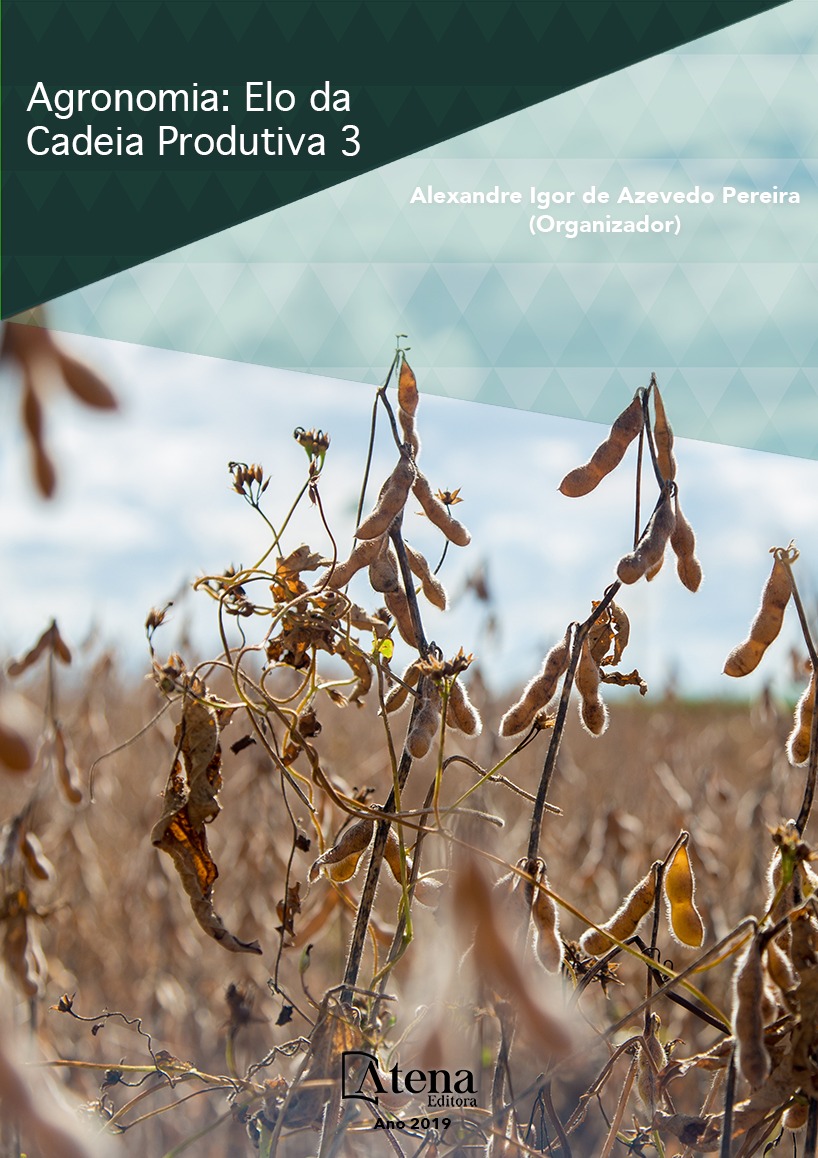
PATOGENICIDADE DE NEMATOIDES ENTOMOPATOGÊNICOS Heterorhabditis bacteriophora HP88 (RHABDITIDA) EM LARVAS DE Papilo anchisiades
O inseto Papilio anchisiadespertence
à família Papilonidae. Na fase larval atacam as
folhas da planta cítricas causando-lhes sérios
danos. Os nematoides entomopatogênicos
(NEPs) são utilizados no controle biológico
de insetos praga, pois possuem associação
simbiótica com bactérias entomopatogênicas,
que causam a morte e infecção em insetos.
A pesquisa teve como objetivo avaliar a ação
patogênica de NEPs HP88 em larvas de Papilo
anchisiades. Os testes de infecção utilizaram
placas de Petri contendo larvas P. anchisiades
e adicionados Jls (Juvenis Infectantes) de
NEPs, colocadas por sete dias em câmara de
germinação (BOD) a 25ºC, 80% U.R. Após este
período, os cadáveres foram transferidos para
placas de coleta de nematoides denominadas
“armadilhas de White modificada”, com o
objetivo de identificar a emergência de NEPs
em sua fase infectante J3. Os resultados
apresentaram uma média de mortalidade 46%
no teste com NEPs e 100% de sobrevivência
no controle, indicando a eficiência de NEPs
no controle biológico. Nesse sentido, os
nematoides entomopatogênicos (NEPs) são
viáveis no controle biológico de vários insetos
praga, e apresentam potencial para serem
utilizados como agentes de controle nessas
plantações, sendo um recurso alternativo ao
uso convencional de agrotóxicos.
PATOGENICIDADE DE NEMATOIDES ENTOMOPATOGÊNICOS Heterorhabditis bacteriophora HP88 (RHABDITIDA) EM LARVAS DE Papilo anchisiades
-
DOI: 10.22533/at.ed.42519040423
-
Palavras-chave: Controle Biológico, Nematologia, Bactérias Patogênicas, Juvenis.
-
Keywords: Biological Control, Nematology, Pathogenic Bacteria, Juvenile.
-
Abstract:
The insect Papilio anchisiades is
from the papilonidae family. In the larval phase,
they attack the leaves of the citrus plants causing
them serious damage. The entomopathogenic
nematodes (EPNs) are used in biological
control of insects prague, because they have
a symbiotic association with entomopatogenic,
bacterias causing death and infection in insects.
Research aimed to evaluate the pathogenic
action of EPNs HP88 in P. anchisiades larvae.
The infection tests used Petri plates containing P. anchisiades larvae and JLs (juvenile infectious) of EPNs added, placed for seven
days in germination chamber (BOD) to 25ºc, 80% U.R. After this period, the corpses
were transferred to nematodes collection plates, called “White modified traps”, in order
to identify the emergence of EPNs in its infective J3 phase. The results presented an
average mortality of 46% in the test with EPNs and 100% survival in control, indicating
the efficiency of EPNs in biological control. This way, the entomopathogenic nematodes
(EPNs) are viable in biological control of several prague insects, and show potential
to be used as control agents in these plantations, being an alternative resource to the
conventional use of pesticides.
-
Número de páginas: 15
- Felipe da Silva Costa
- Patrícia Batista de Oliveira
- Thaís de Moraes Ferreira
- Ana Carolina Loreti Silva


